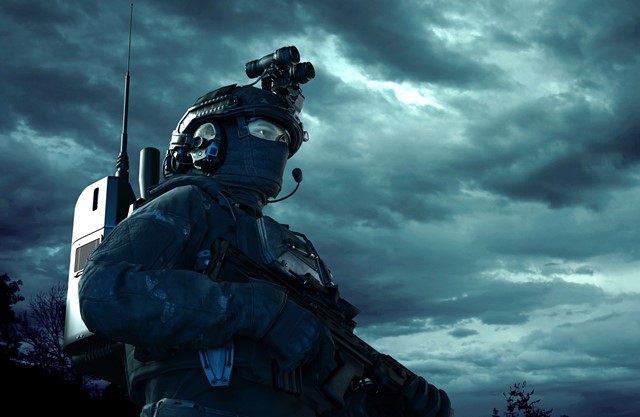After 100 years what is the future for tanks?

Above:
An early model British Mark I 'male' tank, named C-15, near Thiepval, 25 September 1916. The tank is probably in reserve for the Battle of Thiepval Ridge which began on 26 September. The tank is fitted with the wire 'grenade shield' and steering tail, both features discarded in the next models.
Courtesy Imperial War Museum
In an effort to break the stalemate on the Somme, the British attacked the positions of the German 28th Reserve Infantry Regiment at Flers–Courcelette with 32 tanks. Although the results of the attack were mixed, it revealed the potentially decisive role of tanks on the modern battlefield.
Ever since 1916, armoured vehicles have been a key part of modern armies and their design has been evolutionary, not revolutionary. As new technologies change the face of modern warfare, what does the future hold for tanks? Do they have a role on the battlefield of the future?
Now, experts from the Ministry of Defence’s Defence Science and Technology Laboratory (Dstl) are looking at what the future holds not just for tanks but for all armoured fighting vehicles (AFVs).
.jpg)
Courtesy Dstl / Copyright Thales Air Defence Ltd
Modern technologies mean that future armoured vehicles could be very different from the heavy tracked vehicles in service today. For example:
• Active protection systems1 that can destroy incoming weapons fire reduce the need for heavy armour, allowing lighter weight vehicles to be developed.
• Stealth technologies that make vehicles harder to locate, target and destroy.
• Electric drive systems that are smaller, lighter and more efficient than traditional fossil fuel engines. Their use could also reduce the vehicles heat signature making them harder to detect.
• New energy storage systems that could power lasers and other advanced systems such as electric armour2.
• Materials technologies that allow innovative forms of armour to be developed that boast both high levels of protection and low weight.
• Advanced suspensions and electric drive systems that enable wheeled vehicles to have similar mobility to tracked vehicles, but travel much faster.
• Remote controlled unmanned vehicles that operate as an integral part of the vehicle which could be used in a range of ways such as reconnaissance, route proving and force protection.
Dstl is continuing work to explore the nature and design of future vehicles, including very light, agile and networked vehicles exploiting long range sensors and weapons for survivability, new configurations to provide maximum protection to the crew, optimising designs for urban operations and the increased use of automation to reduce crew numbers or minimise exposure of the crew to threats. These studies are building on years of experience and work with industry.

Courtesy Dstl / Copyright Thales Air Defence Ltd
One view of the future of armoured vehicles comes from recent studies under the Future Protected Vehicle Capability Vision, looking at light and medium vehicle concepts. For example:
• Land Apache: A lightweight (13 ton) very agile platform with advanced suspension and electric drive. Equipped with long range sensors and missiles it would exploit networking with other platforms and unmanned air vehicles (UAVs) for intelligence gathering and the defeat of threats
• Urban Operations Vehicle. A medium weight (22 ton) vehicle optimised for operations in urban areas. Multi-wheel steer, long travel suspension and electric drive provide agility. Multiple sensors and weapon systems allow the simultaneous detection and engagement of threats, advanced active protection systems provide protection against rocket propelled grenades and other threats fired from short ranges. The vehicle can be fitted with a dozer blade and robotic arm for clearing rubble and barriers.
• Force protection unmanned vehicle – A vey lightweight (2 ton), high mobility vehicle that is capable of reaching speeds of 50 mph (80 kph). Its design allows the vehicle to be configured for a range of operational requirements and sophisticated countermeasure launchers for defence.
Not only will the coming generations of armoured vehicles look different on the outside, they will look different on the inside as well. Crew compartments in the first tanks were cramped, uncomfortable, noisy, badly laid-out and poorly ventilated. Today we understand the importance of ensuring that the crew compartment is comfortable and well designed, incorporating cutting edge technology. Dstl is working with industry to study how the vehicle crew station of the future is likely to be radically different from those in current vehicles, using advanced display technologies, augmented reality and advanced data management systems to enhance battlefield performance.
Jonathan Lyle, Dstl’s Chief Executive said: “Dstl’s work will ensure that we are able to make informed decisions about the design and capabilities of our next generation of armoured vehicles. This will ensure that our Armed Forces have the best possible equipment.”
There is a direct line from the Admiralty Land Ships Committee, who oversaw the development of the tank in WW1, to Dstl through various organisations such as Department of Tank Design, the Fighting Vehicles Research and Development Establishment, Military vehicles and Engineering Establishment, and Defence Evaluation and Research Agency.
Historically the UK has taken a bold and innovative approach to the development of tank design. For example:
• 1953 - Concept for 15 ton one man tank mounting fixed 2 external 120mm guns each with a 7 round revolver type autoloader. It was aimed by turning the vehicle and by adjusting the suspension
• 1968 – The UK built the world’s first demonstrator tank with an unmanned turret and autoloader. This influenced a number of concepts for lighter vehicles with increased levels of crew protection
Dstl is working closely with the military to understand their developing requirements to inform the work required to ensure that the coming generations of armoured vehicles meet their expected operational needs.
The UK’s current generation of AFVs, the Challenger II Main Battle Tank (MBT) and Warrior Infantry Fighting Vehicle (IFV), is due to be phased out of service by the middle of the century. Although this is many years away Dstl’s work will ensure that the fighting vehicles of tomorrow utilise the latest technologies and meet the military’s evolving operational requirements.












